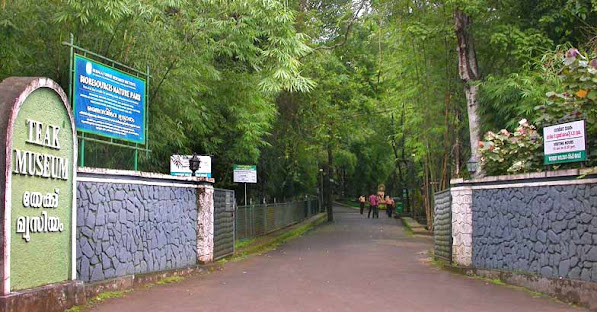Teak Museum: Heritage of the King of Timbers
The tropical forests of Kerala is a land of rich flora and one such important tree is the Teak which for centuries has been an integral part of people's life in many ways. The Teak which is also called King of Timbers finds a sanctuary for it in Kerala at Nilambur & today is a museum called the Teak Museum. The preservation of Teak was a handy work of one of the most celebrated Collector of the old Madras Presidency Henry Cannoli,. Today the Teak museum is a must visit for all who love nature & is an enthusiast of flora conservation.
For centuries Malabar was considered to be a place which pioneered ship building making some of the largest ships used for trade. Arabs, Europeans, and Chinese came to the shores to purchase these large vessels. The most integral part of the structure was the strength of the teakwood used in it & the ship builders were blessed with abundant supply of the wood from the forests of Wayanad & Kottayam. It was only in the 19th century that the need & value of trade of this timber made the British understand the importance of conserving this precious wood. In 1844 collector Canolly issued a decree to initiate a plantation on a large scale of Teak saplings at Nilambur & along with his trusted Chanthu Menon the work started & still continues. It was only long after independence that the Kerala Forest Research Institute formally established the plantation as a museum in 1995. The museum today highlights the work done in conservation of teakwood, different species of the timber, educational specimens for others to follow plantation & creates an ecosystem for some of the most sacred trees to grow in its habitat. The museum & the plantation also allows the fauna to develop & is a nesting site for many migratory birds who travel across the plantation. The plantation became the first of its kind which protected Teak & is one of the largest today in India. The initial plantation of the British may have been at an eye to export high quality timber to Europe but its benefits today are enjoyed by the people of Kerala.
It is considered that the word Teak came from the Malayalam word Thekku & the museum takes all visitors on a beautiful journey along history highlighting important events & specimens. In the portico of the museum the first specimen one sees is the extensive root system of a Teak tree considered to be over 50 years old. One of the most important specimens at the museum is the replica of a Kannimara Teak said to be over 450 years old brought from the Nagarampara Forest Range of Kottayam. This stump itself gives one a glimpse of the quality of timber provided by the tree. The museum also showcases a translite of the oldest living Kannimara Teak located at Parambikulam. There is also a replica of the life size trunk of the oldest Teak tree growing in the Malayattoor forest which is exhibited for all to see the grandeur. The plantation also has the presence of some of the oldest trees one can find in the world today there is also a 160 year old teak tree said to have been planted by Collector Cannoli himself. The plantation is a beautiful place to spend quality time under the many large shady trees. The vivid flora & reptiles one sees here is a great sight for the eye. There is also a hanging bridge constructed over the stream for the visitors to walk over. The plantation is a large area & each tree is well documented which helps all to understand its history & type.
The museum also provides educational exhibits which help students & new planters understand the best procedures to grow Teak trees. There are also paintings of the initial days of the plantations with many pictures clearly providing information of planting saplings, collecting wood samples & use of harvesting tools. The museum is a comprehensive notebook for any environmentalist who wants to learn. One of the unique sights is the absence of bamboo trees around the plantation done deliberately as the Britishers considered them a source of quick fires which would have burnt down the whole plantation. The trees here certainly make one realise why Teak has the distinction of being the King among timbers. A visit is necessary thus for all who come to the beautiful town of Nilambur at the Teak Museum.




Comments
Post a Comment